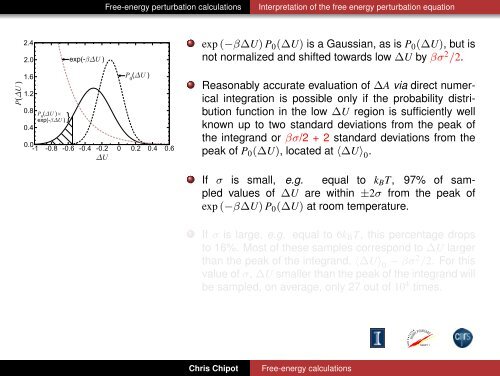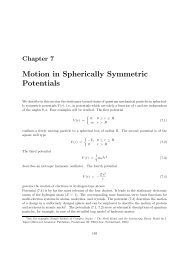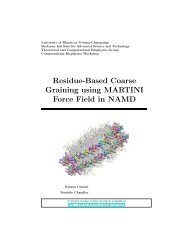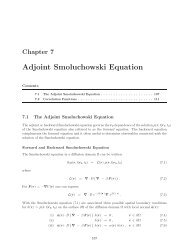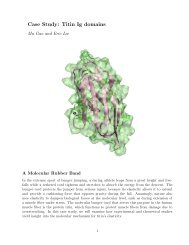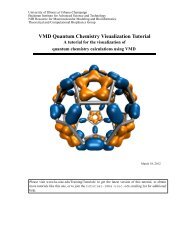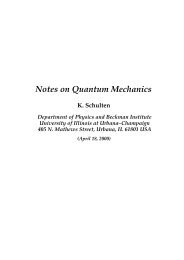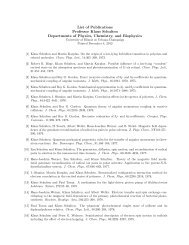Free-energy calculations - Theoretical Biophysics Group
Free-energy calculations - Theoretical Biophysics Group
Free-energy calculations - Theoretical Biophysics Group
Create successful ePaper yourself
Turn your PDF publications into a flip-book with our unique Google optimized e-Paper software.
P(∆U )<br />
2.4<br />
2.0<br />
1.6<br />
1.2<br />
0.8 P (∆U ) × 0<br />
exp(-β∆U )<br />
0.4<br />
}<br />
exp(-β∆U )<br />
0.0<br />
-1 -0.8 -0.6 -0.4 -0.2<br />
∆U<br />
0 0.2 0.4 0.6<br />
<strong>Free</strong>-<strong>energy</strong> perturbation <strong>calculations</strong> Interpretation of the free <strong>energy</strong> perturbation equation<br />
P 0 (∆U )<br />
exp (−β∆U) P0(∆U) is a Gaussian, as is P0(∆U), but is<br />
not normalized and shifted towards low ∆U by βσ 2 /2.<br />
Reasonably accurate evaluation of ∆A via direct numerical<br />
integration is possible only if the probability distribution<br />
function in the low ∆U region is sufficiently well<br />
known up to two standard deviations from the peak of<br />
the integrand or βσ/2 + 2 standard deviations from the<br />
peak of P0(∆U), located at 〈∆U〉 0 .<br />
If σ is small, e.g. equal to kBT, 97% of sampled<br />
values of ∆U are within ±2σ from the peak of<br />
exp (−β∆U) P0(∆U) at room temperature.<br />
If σ is large, e.g. equal to 6kBT, this percentage drops<br />
to 16%. Most of these samples correspond to ∆U larger<br />
than the peak of the integrand, 〈∆U〉 0 − βσ 2 /2. For this<br />
value of σ, ∆U smaller than the peak of the integrand will<br />
be sampled, on average, only 27 out of 10 4 times.<br />
Chris Chipot <strong>Free</strong>-<strong>energy</strong> <strong>calculations</strong>


